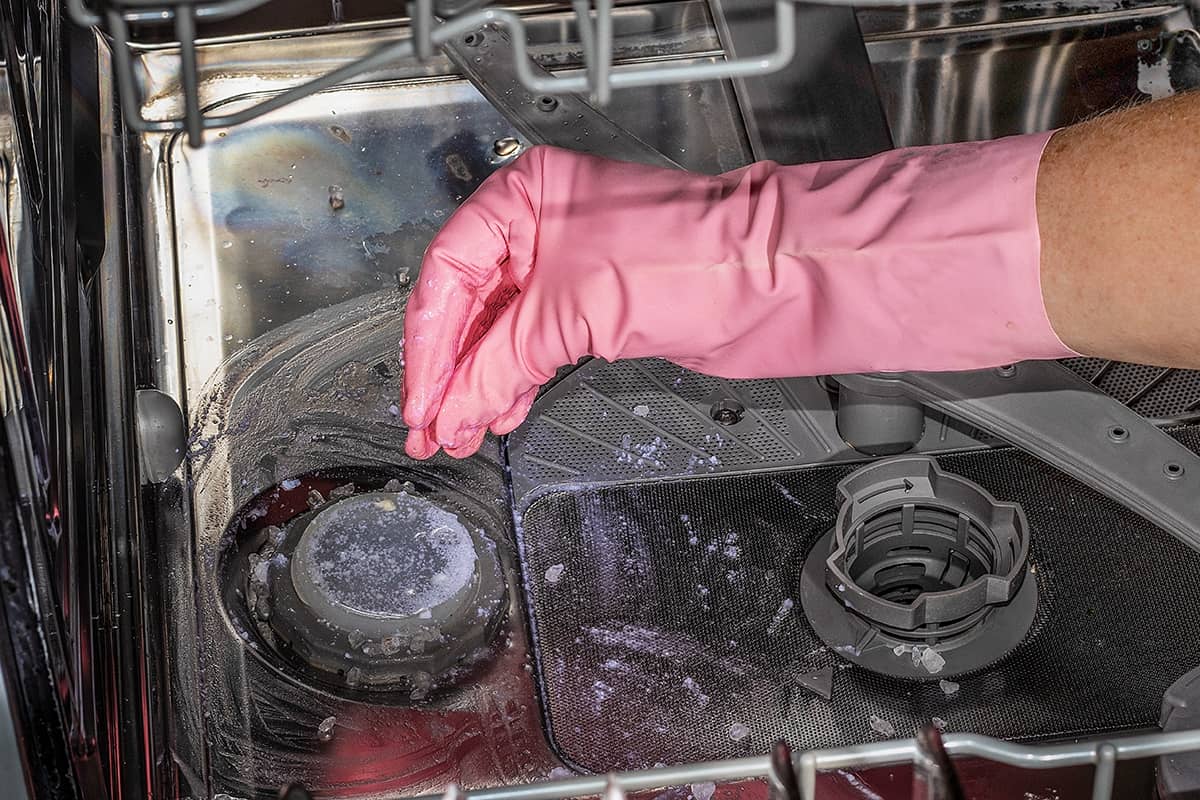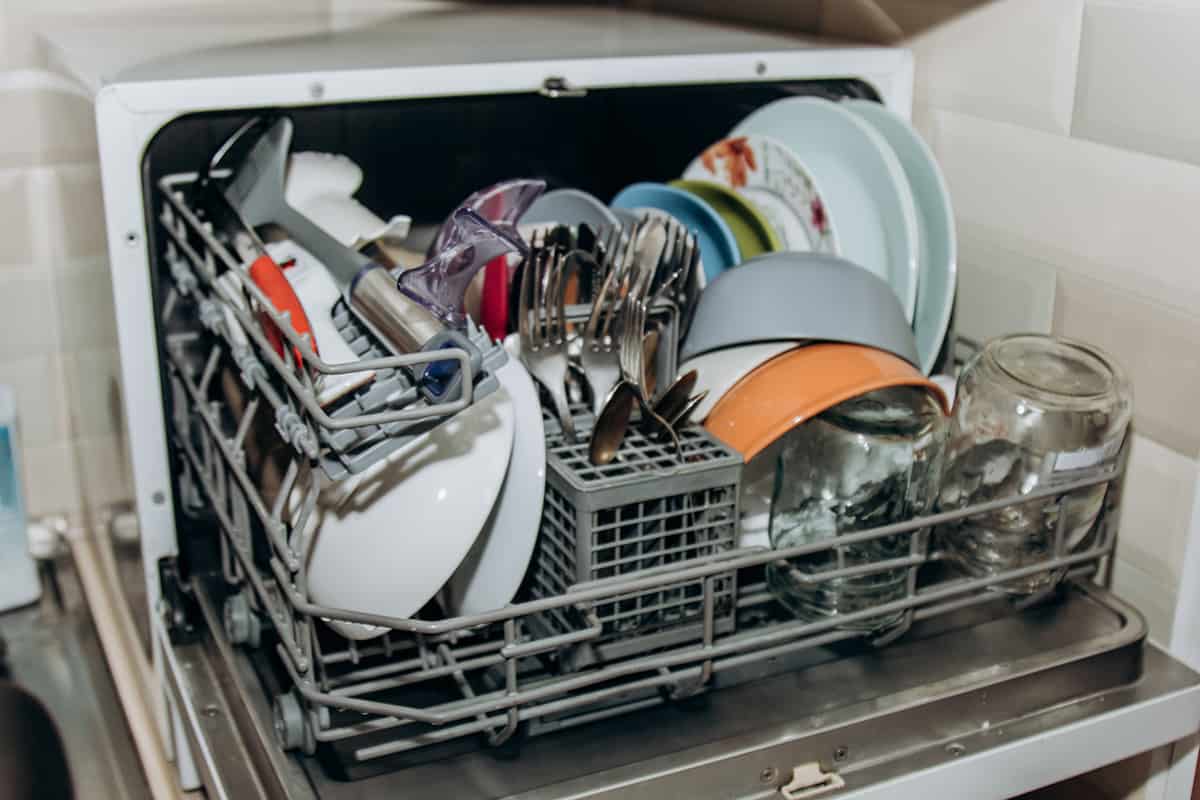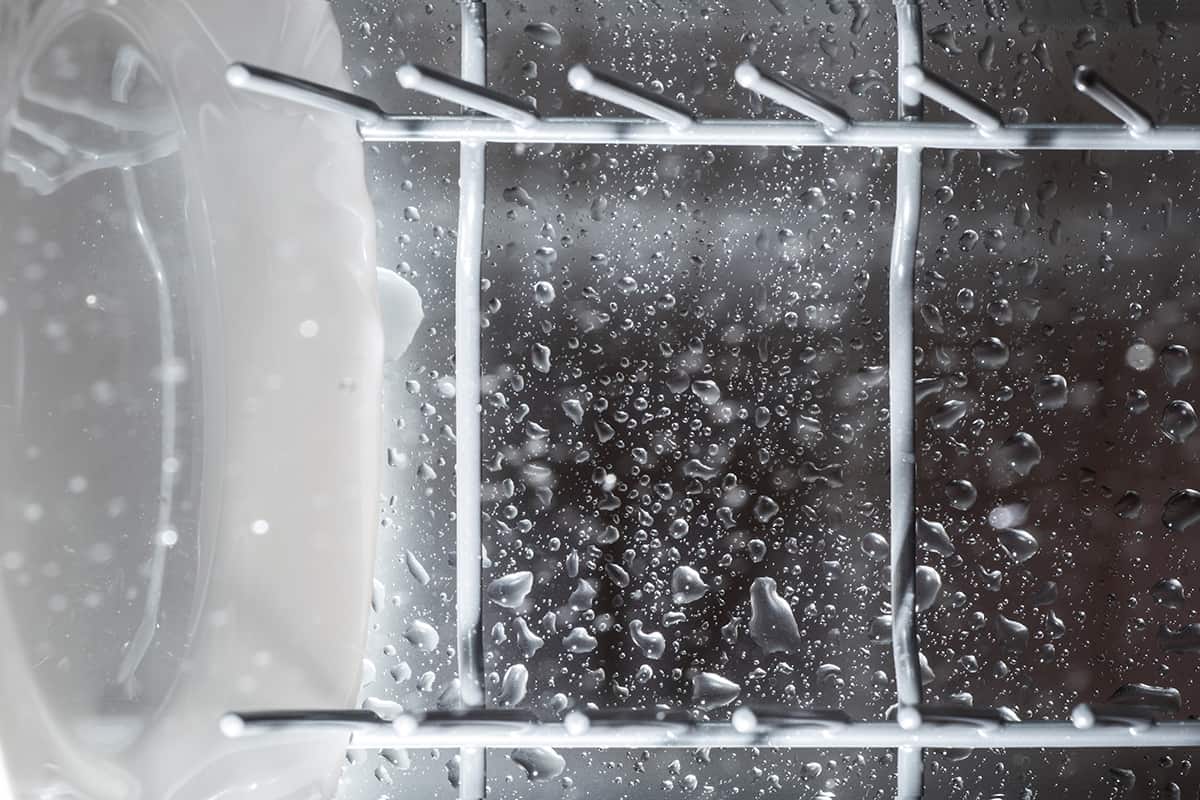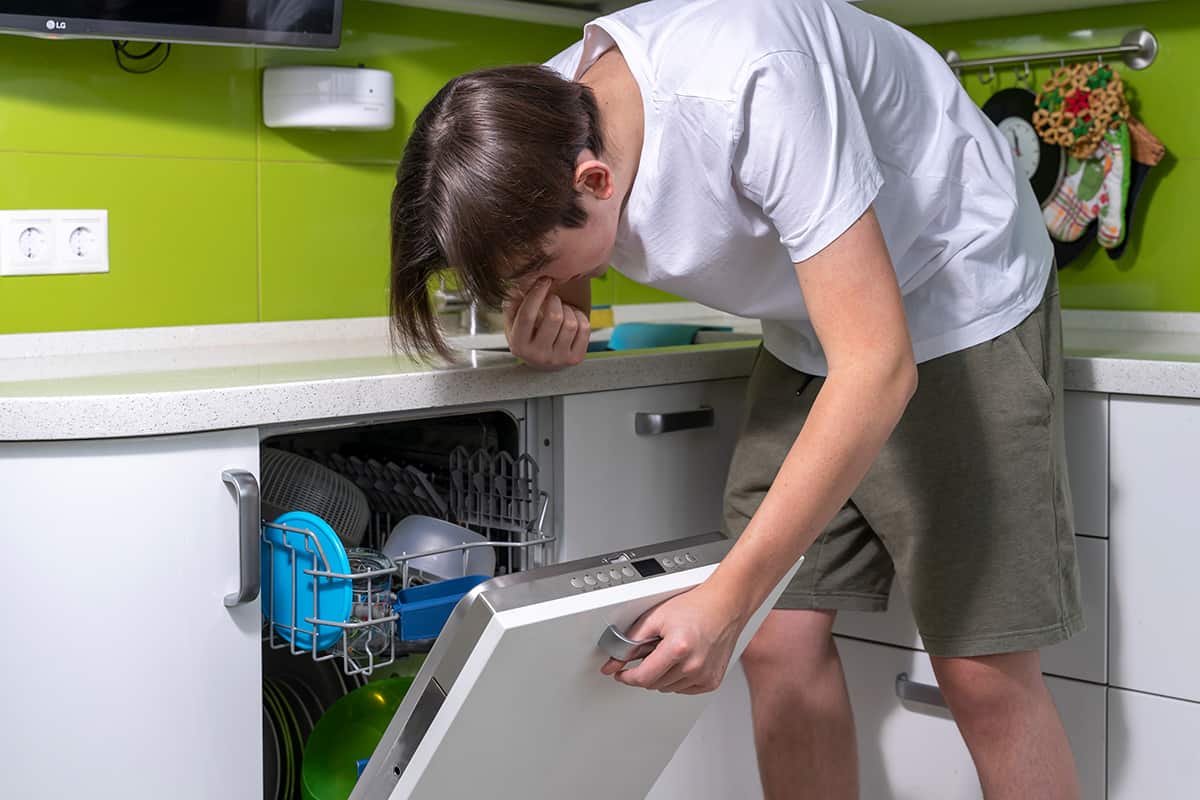Dishwashers are supposed to keep your dishes clean, but in doing so, they can end up smelling foul. It could get so bad that nobody will want to enter your kitchen whenever you load the dishracks. So, what makes a dishwasher smell bad in the first place?
The most common causes of a smelly dishwasher are bacteria and mold growth, which is a direct result of:
- A clogged filter assembly
- A clogged drain line
- Damaged door gasket
- Baked-up garbage disposal
Today, I’ll help you diagnose your smelly dishwasher problem, provide solutions to get rid of the problem once and for all, and explain how to deep-clean a dishwasher.
Why Does My Dishwasher Smell?
Dishwashers aren’t supposed to smell fragrant. When you open the door and take in a huge whiff, it’s supposed to smell like, well, nothing. Perhaps you might detect tiny amounts of soap and water, but that should be the extent of a dishwasher’s odors. If it smells like anything else, then something is going on.
In extreme cases, the inside of a dishwasher can smell like a dirty bathroom or a wet dog, which is not something anyone wants to inhale while standing in a kitchen. So, what exactly is causing your dishwasher to smell?
For the most part, a smelly dishwasher is a sign that it’s infested with bacteria and/or mold. But what is the cause of bacteria and mold growth inside a dishwasher, you ask?
1. Clogged filter assembly

The dishwasher filter assembly is comprised of 2 main parts—a cylindrical ultra-fine filter and a fine filter. Their job is to capture food particles and prevent them from going down the drain. when your drain becomes clogged with old food remnants, water will not drain from the dishwasher, and you’ll have to deal with gross standing water.
Luckily, washing a dishwasher filter assembly is pretty simple. Here’s what you need to do to clean your dishwasher’s filter.
- Shut off and unload the dishwasher.
- Pull out or remove the bottom dishrack.
- Locate the filter assembly and take it out of the dishwasher tub.
- Dump the solid contents into the garbage.
- Separate the filter assembly components and dunk them in a tub of soapy water.
- Let the filter parts soak for 5 to 10 minutes.
- Take a scrub brush and carefully clean the residue from the mesh screens.
- Reassemble the dishwasher filter components and place them back into the dishwasher.
On average, you should wash the dishwasher filter assembly once a week. Ideally, you will clean it out after a completed wash cycle.
2. A clogged drain line
Although the filter assembly acts as a line of defense to prevent the drain line from clogging, it’s not a guarantee. The blockage in the drain line might not stop water from draining, but the solid debris will collect more and more bacteria, which is the source of the foul smell coming out of your dishwasher.
Cleaning a drain line can be simple enough, as long as you have at least 1 cup of vinegar and 1 cup of baking soda on hand. Here’s what you need to do to unclog the drain line.
- Shut off and unload the dishwasher.
- Pull out or remove the bottom dishrack.
- Sprinkle 1 cup of baking soda around the edge of the dishwasher drain port.
- Pour 1 cup of white vinegar on the baking soda and allow the mixture to go down the drain line.
- Wait for 5 to 10 minutes.
- Turn on the dishwasher and run a rinse cycle at the highest temperature setting.
- Baking soda and vinegar create carbon dioxide, which can help loosen debris clinging to the drain line. Give the solution a bit of time to work its magic before flushing the drain line with heated water.
3. Damaged door gasket
The door gasket is the plastic or silicone seal around the dishwasher door. Its job is to create a leakproof seal that prevents water from escaping the dishwasher and spilling onto your kitchen floor. A damaged door gasket can become smelly when bacteria seek refuge in tiny cracks or tears in the plastic or silicone.
Damage to the door gasket typically occurs when you do not run the dishwasher frequently enough. When the gasket dries out, it becomes susceptible to cracking. Sadly, there is no way to fix rips or tears in the gasket. Your only option is to replace the gasket entirely.
However, you can clean the gasket as a temporary solution while waiting for the replacement gasket to arrive at your doorstep. Here’s what you need to do.
- Shut off the dishwasher and open the dishwasher door.
- Use a dry rag and wipe down the gasket, including the folds and the inner door panel.
- Moisten a clean rag with vinegar and continue wiping down the gasket.
- Let the gasket dry for 5 to 10 minutes.
4. Baked-up garbage disposal
Although you shouldn’t prewash your dishes, it’s generally good practice to scrape away the largest bits of debris from your dishes before inserting them into your dishwasher. That way, you reduce the risk of clogging the filter assembly and drain line. However, most people rely on their garbage disposal to take care of the largest bits of debris by pulverizing them to bits.
If your dishwasher is connected to your kitchen sink’s garbage disposal, then you will have to inspect it for clogging, which can prevent water from draining properly and force it back into your dishwasher (yuck).
Here’s what you need to do to get rid of the blockage in your garbage disposal:
- Sprinkle half a cup of baking soda into your kitchen sink’s drain.
- Chase the baking soda with 1 cup of distilled white vinegar.
- Wait for 10 to 20 minutes.
- Turn on the garbage disposal while pouring hot water from your faucet down the drain.
- Keep doing this until the blockage is cleared up.
When Should I Call a Pro?
If you’ve tried all four solutions mentioned above with no significant results, then it’s time to contact a professional. You can try contacting a local plumber who is experienced in dealing with clogged dishwashers, but it’s best that you contact a trained dishwasher technician.
Inspect the dishwasher’s manual to see whether or not there’s a trusted service center nearby. Try giving them a call and seeing what they can do to resolve your smelly dishwasher problem once and for all.
Why Does My Dishwasher Smell Like Burned Plastic?

If there’s smoke, there’s probably a fire. And if your dishwasher smells like burned plastic, it’s probably because the heating element is too close to the plastic coating of your dishracks.
This is usually a problem after moving homes. The heating coil inside the dishwasher may have moved out of place due to bumps during transport. If the bottom dishrack is warped because of the heating element, you will need to manually reposition the coil so that it doesn’t burn the dishrack again.
In other cases, you may smell burned plastic because a plastic cup fell onto the heating coil when the dishwasher was at work. If this is what happened to your dishwasher, check out my guide on Plastic Melted in the Dishwasher—What to Do.
How to Deep-Clean a Dishwasher

Deep-cleaning a dishwasher involves introducing a cleaning agent into the dishwasher to kill bacteria, mold, and germs. It’s not something you need to add to your list of daily maintenance rituals, but it’s worth knowing, especially if your dishwasher smells awful.
Before we get started, make sure you have the following supplies on hand:
- 1/3 cup distilled white vinegar
- 1 cup baking soda
- 2 cups water
- Spray bottle
- Shut off the dishwasher and remove the dishracks.
- Wash the dishracks in your kitchen sink.
- Add 1 cup water and 1/3 cup distilled white vinegar into a spray bottle.
- Spray the interior of the dishwasher with the vinegar solution.
- Let the vinegar solution sit for 5 to 10 minutes
- Turn on the dishwasher and run a rinse cycle.
- Shut off the dishwasher after the rinse cycle is complete.
- Mix 1 cup baking soda and 1 cup water to create a thick paste.
- Smear a thin layer of the paste onto the walls of the dishwasher tub.
- Let the paste sit for 5 to 10 minutes.
- Turn on the dishwasher and run another rinse cycle.
A few reminders
Vinegar is not a disinfectant but will help neutralize odors in your dishwasher. So, after rinsing away the baking soda paste, feel free to spray more of the vinegar solution into your dishwasher for enhanced deodorizing effects.
It’s important that you do not pour straight vinegar into your dishwasher unless you immediately flush it with water. Leaving vinegar on the stainless-steel walls of the tub may cause damage to the outer chromium and carbon layer and expose the iron underneath, making it susceptible to corrosion.
Smear the baking soda paste in straight lines. Do not attempt to wipe the paste in circular motions since the baking soda particles may scratch the tub’s stainless-steel surface.






